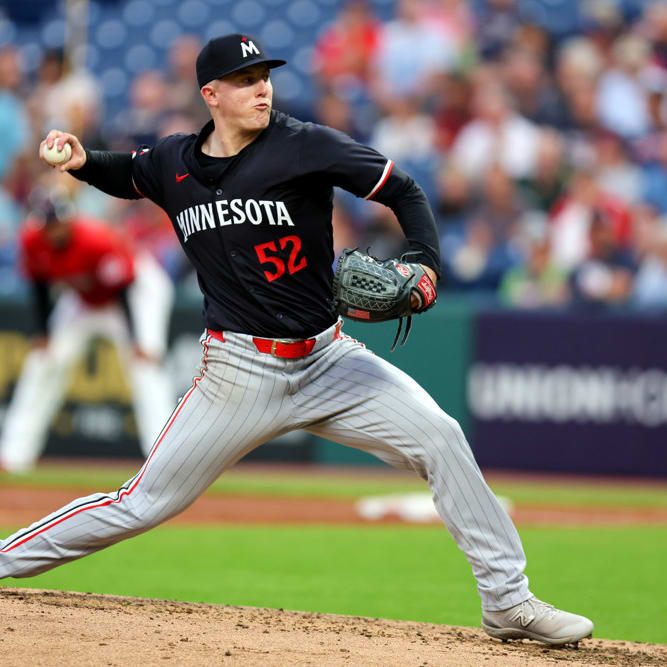This article is part of our Scouting Pitchers series.
Statistics through 2009 season
After a lengthy absence, I'm back for the 2010 season to provide you with some more in-depth profiles of major and minor league pitchers. Last July, I promised you profiles of two Mariners hurlers. Since then, Brandon Morrow was traded to Toronto. We'll check out Morrow and Mariners closer David Aardsma.
I'll be changing the column around this year. I'm going to spend less time on a player's history, as most of you probably skip past that stuff anyway. That will free up more time and space for analysis and covering more pitchers. I'll also work in a rotating segment called "What happened to...?" This will cover a pitcher whose value has spiked upward or downwards in the last year. I'll also integrate a recommendation in each column of a pitcher who seems to be coming into his own. The Radar Love section will return, and be rotating as well.
The right-handed Morrow (6-3, 195, Born 7/26/1984) was Seattle's first-round pick (fifth overall) of the 2006 draft out of the University of California. He blossomed as a starter in his junior year at UC after two nondescript seasons in the bullpen. The Mariners worked Morrow as a reliever in 2007 (3-4, 4.12 ERA in 60 games) and most of 2008 (3-4, 3.34, 10 saves in 45 games, five of them starts). He dealt a gem on September 5, 2008, no-hitting the Yankees for 7.2 innings in his first major league start.
2009 opened with the Mariners planning to use Morrow as a closer, with the trade of J.J. Putz. Two blown saves in May demoted him to middle relief for a month. The Mariners and Morrow then decided to try him again as a starter, and sent him to Triple-A for innings (5-3, 3.60 in 10 starts). He was still wild in his first three September starts, but sparkled on September 30 against the A's, shutting them out through eight innings with nine strikeouts.
Brandon Morrow: (Lifetime G/F 0.58)
Rating: | %Thrown: | |
Fastball | 70 | 60 |
Curveball | 60 | 15 |
Slider | 65 | 15 |
Change-up | 60 | 10 |
Control | 40 |
|
Delivery | 45 |
|
Composure | 50 |
|
There's nothing wrong with Morrow's stuff, which starts with a 92-96 MPH four-seam fastball. Criticized in 2009 for relying on it too much, he came back from Triple-A with better control of it. Morrow's fastball had a little less movement upon his return, but that could have been the effect of a career-high 125 innings. He seemed more relaxed, was throwing across his body less, and was more unpredictable with his pitch selection. Morrow's fastball has good arm-side run and has some rising action. Hitters aren't that tempted by his high fastball, but he generates a lot of weak pop-ups by busting them inside. Morrow has struggled working left-handed hitters (.805 OPS) inside, but his fastball's natural movement in to righties works well (.593 OPS).
Morrow also has very hard secondary stuff: a high-80s slider, low-80s curveball, and an 86-90 mph changeup. There aren't many pitchers who have that kind of velocity on their breaking pitches. Morrow's slider is effective when he locates it inside to left-handers, but he struggles to throw it consistently for strikes. It has a very late break. His changeup looks like a two-seamer, with its late, slight movement. Morrow's curve was MIA for most of 2009, and re-emerged after his work at Tacoma. It can be a major weapon, with its big and unpredictable break.
Morrow's motion is a bit of a red flag, with a dropped forearm and wrist wrap similar to Aaron Crow or Scott Baker. He missed some time in 2009 with a sore arm, but did not require surgery and is reportedly healthy now. Of course, the Blue Jays have had problems keeping their pitchers healthy. Morrow does repeat his delivery well, and tips just his curveball occasionally. If Toronto can iron out Morrow's control problems and use him wisely, I think he can stay healthy.
As with many young pitchers, it's all about health and control with Morrow. He experienced stretches in Seattle where he completely lost his command and didn't have the moxie or experience to work through them. The Mariners didn't formulate a coherent plan for his career, so the move to Toronto should be positive. Morrow's intense temperament seems better suited to starting, and working 150-175 innings in 2010 will give him the chance to work through his control problems. He will have ample opportunity to contribute innings in Toronto. Since Morrow will be facing his AL East competitors often, I suggest a limited investment for 2010.
----
The right-handed David Aardsma (6-4, 205, Born 12/27/1981) made good on his potential in 2009 after bouncing between several teams since his selection as a first-round pick (22nd overall) in the 2003 draft. He has thrown for San Francisco (2004), the Cubs (2006) and White Sox (2007), Red Sox (2008), and finally Seattle. Obviously Aardsma has a good arm, but poor command (124 walks in 216 major league innings) and pitching in hitters' parks sabotaged him. Working in pitcher-friendly Safeco Field in 2009 did the trick, to the tune of 38 saves and a 2.52 ERA in 73 games.
David Aardsma: (Lifetime G/F 0.58)
| Rating: | %Thrown: |
Fastball | 70 | 70 |
Curveball | N/A |
|
Slider | 60 | 15 |
Splitter | 60 | 15 |
Control | 50 |
|
Delivery | 55 |
|
Composure | 60 |
|
Aardsma has a 93-97 MPH fastball with good boring and rising action. His approach is fairly uncomplicated: get ahead of hitters by moving his fastball in and out, and then put them away with a rising fastball or diving slider. He can beat good hitters inside with his hard stuff, and they often follow him up the ladder, where he is very hard to hit (.190 BAA in 2009). Aardsma's fastball can have movement down in the zone, too. It will sometimes keep moving in on a right-hander, who tries to hit it as it moves on by him.
Aardsma's 84-86 MPH slider has a nice break, and he will use it in stretches. He seems to be a "feel" pitcher. His 84-88 MPH split-finger is pretty much a show-me pitch. Like many pitchers who throw it, Aardsma struggles to throw his splitter for strikes. One would surmise Aardsma benefited from Safeco Field last year (2.90 ERA), but his road ERA (2.03) was even better. He blew four saves in 42 chances in 2009 – two in Seattle, two away. Any flyball pitcher is helped by having Franklin Guitierrez and Ichiro in the outfield, and Aardsma surrendered just four homers in 2009.
Aardsma's delivery features good balance and a high arm slot, like Ben Sheets. He works quickly and can mow through a lineup when he has his good control. Aardsma runs into troubles when his control deserts him, making his quick tempo a liability. When this happens, hitters watch pitches sail high and merrily trot down to first base. Since his breaking stuff is mainly designed to entice hitters to swing at something out of the strike zone, Aardsma doesn't have a deep enough repertoire to pitch his way out of these jams.
As a strikeout/flyball pitcher who can need a lot of pitches to get through an inning (17.8 per inning in 2009), Aardsma's statistical profile isn't the most stable. On the positive side, he has improved his efficiency – he lowered his lifetime P/IP average to 18.7 last year. However, he lost his command more as the innings wore on, walking 6.0 men per nine innings after he threw pitch number 15 of his appearance. Such a high-wire act can work in the short term, but ask Brad Lidge if it can't catch up to you.
As Dirty Harry said, the question on Aardsma is – do you feel lucky? There's enough evidence in his career to point to both success and failure in 2010. The Mariners will be hoping to sniff the race this year, and will have the dependable Mark Lowe backing up Aardsma, not to mention Brandon League, whom the Mariners acquired in exchange for Morrow.
Article first appeared 2/24/10











